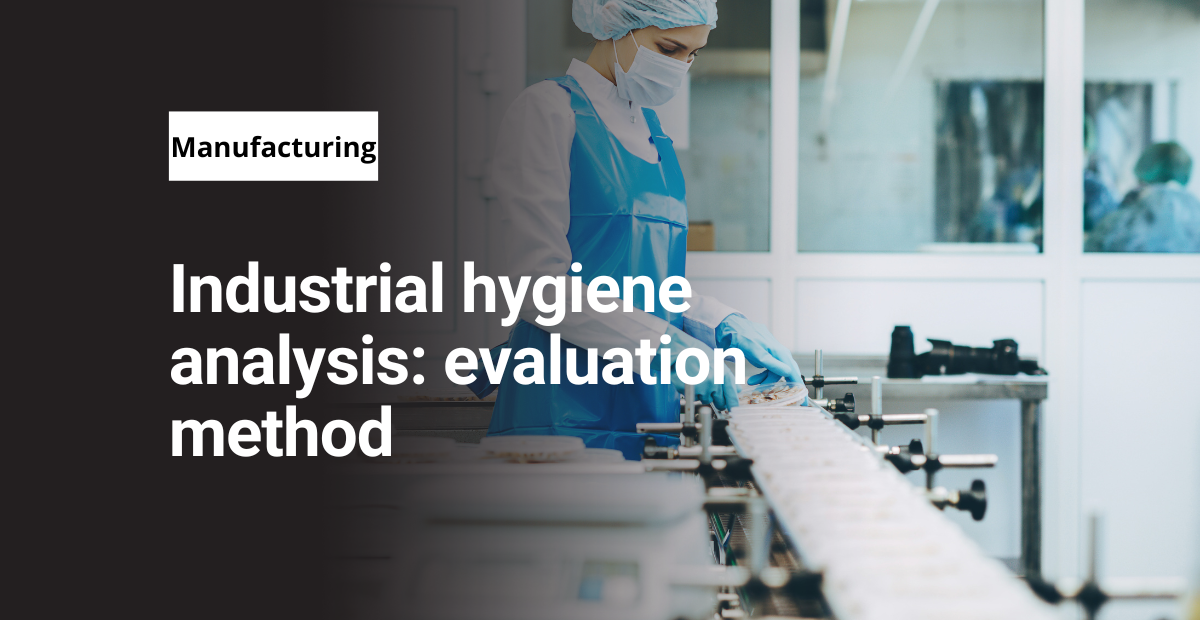Industrial hygiene monitoring involves various types of measuring and sampling in the workplace. Industrial hygiene analysis plays a critical role in evaluating data from these processes. OSHA’s Technical Manual guides industrial hygienists to monitor both equipment and contaminants in the workplace.
This manual includes analysis and evaluation methods that you can use to measure industrial hygiene parameters of concern. Examples of these concerns include: chemical or particulate exposure, vibration, radiation, and noise.
Direct-reading or real-time instruments or monitors provide information at the time of sampling, allowing for rapid decision-making. These instruments allow trained users to determine if site personnel are exposed to airborne conditions which are more than instantaneous (ceiling or peak) exposure limits for specific hazardous air contaminants.
Free template!
Use this Excel template to review your processes and the determine the risk level for different work areas.
Gas, oxygen, and explosibility monitors
Single, dual, or multi-gas monitors can measure oxygen, carbon dioxide, carbon monoxide, hydrogen sulfide, and other toxic gases. Sample concentrations will display in ppm (part per million), percent oxygen, or percent LEL (Lower Explosive Limit).
As part of industrial hygiene analysis, combustible gas meters measure flammable gas concentration as a percentage of the LEL of the calibrated gas. Note: LEL values for most flammable gases and vapors are a few percent in the air (i.e., tens of thousands of ppm) and are NOT appropriate for assessing PEL (Permissible Exposure Limit) concentrations of flammable, toxic gases.
Dust and particulate monitors in industrial hygiene analysis
Aerosol photometers and nephelometers monitor particulate matter such as dust, smoke, mists, and fumes. These instruments detect scattered light or infrared radiation. In addition, some models measure the respirable fraction of dust, reported in μg/m³ or mg/m³.
Moreover, in industrial hygiene analysis, condensation nuclei counters enlarge particles that are too small to detect and then count them. As a result, this device supports quantitative respirator fit-testing and helps test the removal efficiency of HEPA (high-efficiency particulate air) filters.
Detector tubes
There is a wide variety of commercially available detector tubes that can measure over 200 organic and inorganic gases and vapors in the air in industrial hygiene analysis. These consist of sealed glass tubes filled with a granular material coated with an appropriate indicator chemical that will react with a particular gas or vapor to give a color change.
Once the color change takes place, you can compare it to either a scale printed on the tube or a reference chart included with the tube kit to determine the airborne concentration.
Vibration monitors in industrial hygiene analysis
Futhermore, in industrial hygiene analysis, human response to vibration is dependent on several factors. A complete assessment of exposure to vibration requires the measurement of acceleration in well-defined directions, frequencies, and exposure time. The vibration measures along three (x, y, and z) axes.
Typical vibration measurement systems include a device (accelerometer) to sense the vibration, a recorder, a frequency analyzer, a frequency-weighing network (gives a single number as a measure of exposure, expressed in m/s2), and a display such as a meter, printer, or recorder.
You can measure hand-arm vibration while using a hand-held power tool. Measurement of whole-body vibration is essential when measuring vibration from large pieces of machinery operated in a seated, standing, or reclined posture.
The American Conference of Governmental Industrial Hygienists (ACGIH) use ISO standards 5349-1 and 2631-1 to set TLVs (Threshold Limit Values). OSHA does not have standards concerning vibration exposure.
Heat stress instrumentation
Heat stress monitors can be one of two types: a real-time area measuring environmental conditions contributing to heat stress or a real-time personal monitor that measures the wearer’s body temperature and heart rate.
Area monitors for industrial hygiene analysis take measurements of ambient, wet bulb, and globe temperature to consider humidity and radiant heat. Personal monitors can be programmed to alarm when a predetermined temperature or heart rate is exceeded.
Nonionizing radiation monitors
Radiofrequency (RF) survey meters industrial hygiene analysis measure radiation from both electric and magnetic fields. They can determine spatial and temporal averaging for multiple frequencies and display measurement results in percent of exposure.
Also, workers can wear personal RF monitors to measure individual exposure and continuously log and provide exposure results using a shaped frequency response.
Personal sampling for air contaminants
For active sampling, filter cassettes, sorbent tubes, and sampling pumps attach to the employees’ clothing and monitor contaminant levels. For passive sampling, diffusive samplers sample gases and vapors without using a pump. Try to choose individuals who are likely to have the highest workplace exposures (i.e., highest-risk employees) when sampling, in industrial hygiene analysis.
Surface contaminants, skin exposure, biological monitoring, and other analyses
Surface wipe sampling measures the presence of contaminants such as hazardous liquids or particles on work surfaces. Contaminated areas can cause skin exposure or accidental ingestion. Therefore, wipe sampling provides an effective way to document when a skin hazard exists.
In addition, in areas where exposures to toxic metals such as lead (Pb) occur, wipe sampling of settled dust demonstrates that potential exposure exists. Moreover, resuspension of settled dust can increase the risk of inhalation exposure.
Noise measurement in industrial hygiene analysis
Sound-measuring instruments include sound level meters, noise dosimeters, and octave band analyzers. Sound level meters help identify and evaluate individual noise sources for abatement purposes in industrial hygiene analysis.
Octave band analyzers help determine the feasibility of controls for individual noise sources. This is for abatement purposes and for evaluating the effectiveness of hearing protectors. Noise dosimeters measure sound levels. Workers wear them to determine the personal noise dose during the work shift or sampling period. Average noise exposure is calculated over time.





